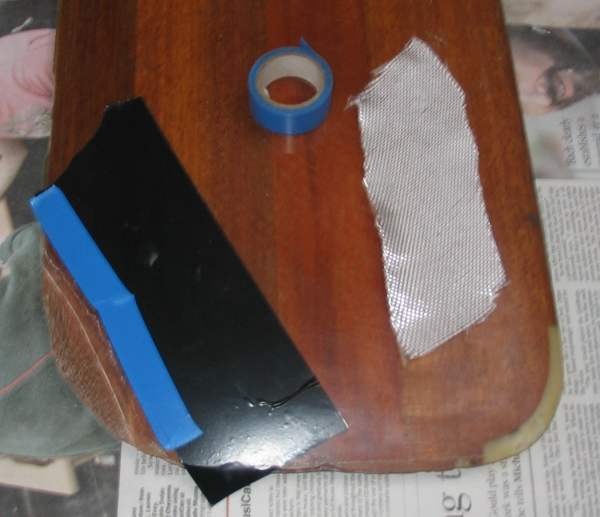Repair to damaged 470 rudder
|
Short story: 8 or 10 years ago a 470 dinghy was washed off the platform at the Royal St. George during a heavy
winter storm. The boat was dashed against the East Pier of the harbour and was a total loss. The rudder was
found floating in Dublin Bay by a Port Pilot who rescued it and dropped it off at my door. I finally found a home
for it and decided to repair the damage. |
 |
The foil is made from laminated timber, shaped and sanded, then sheathed in epoxy/fibreglass cloth (vacuum bagged) to
provide a strong, fair surface. It had delaminated at the trailing edge, and a few nicks here and there. |
 |
The Dremel with a cutting disc makes short work of clearing the delaminated layer of glass. |
 |
| Closer view. |
 |
The damaged area has been sanded to provide a chamfered edge to rebuild upon. |
 |
A piece of lightweight E-Glass cloth... |
 |
I use a bit of silage tape and insulation tape to mask off the board, epoxy will not stick to the tape. |
 |
Epoxy mixed with a small amount of glue powder. Wetted first, then the cloth laid on and wetted out with the brush.
But, how to ensure the cloth will truly stick to the surface, which is curved in two directions? |
 |
Cover with a sheet of thin plastic, cut from a Zip-Loc sandwich bag... |
 |
Then a plastic bag filled with dry soft sand to enforce the shape, a book and a couple of bricks to add weight, the poor
man's vacuum bag! |
 |
A day later, fully cured. I use an orbital sander to trim the edges of the repair. |
 |
Then, a layer of epoxy mixed with fine filler powder to fair the repair and fill the varios nicks in the trailing edge. |
 |
After a couple of hours of wet sanding - 320 then 600, then 800, then 1200, then polish and wax - the finished board is
refitted to the stock. The board weighs 2.6 kilos, a bit heavier than the class rule minimum weight of 2.3 kg, but
strong and fair. |
 |
12 December 2007
|
